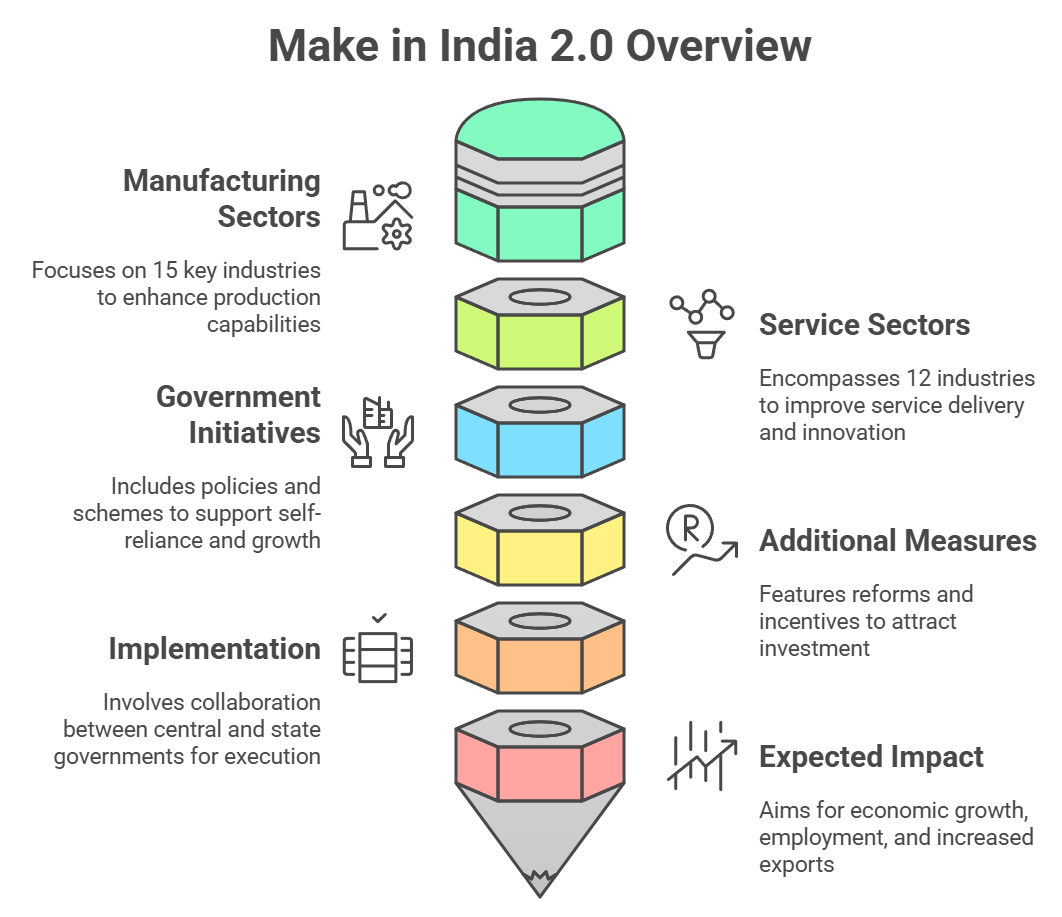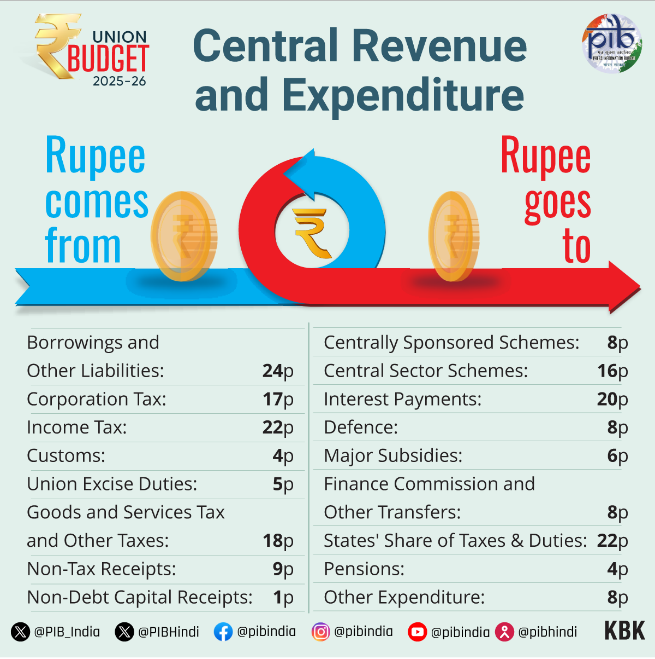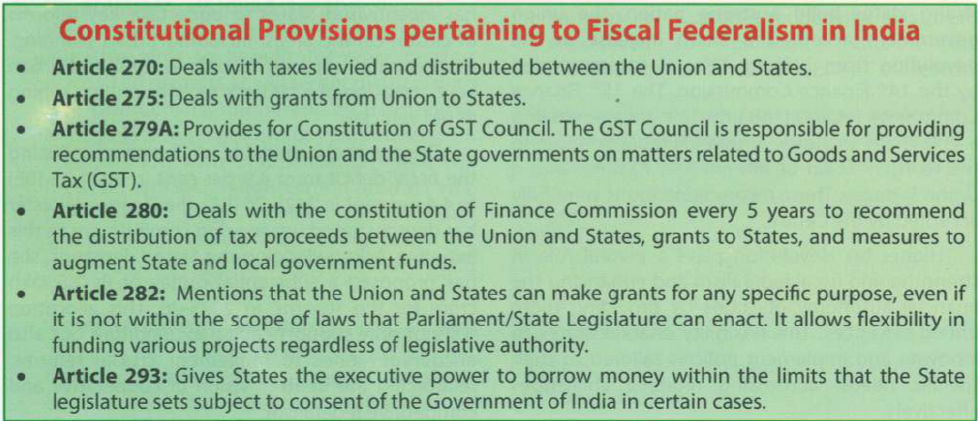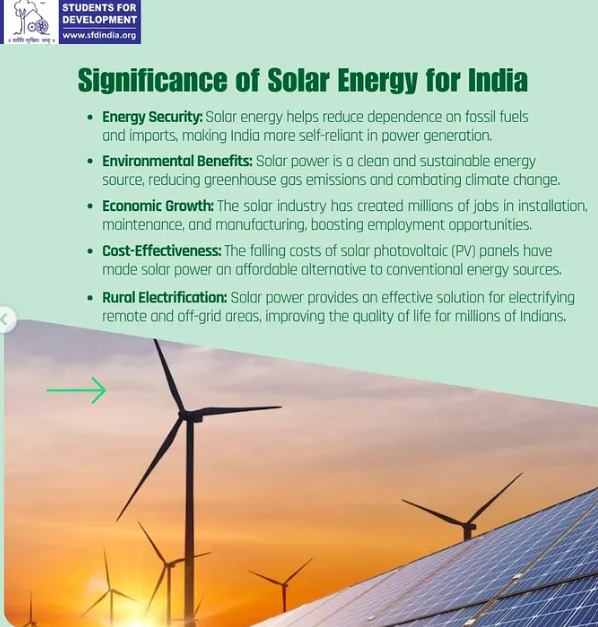YOJANA March 2025
Chapter 1: Roadmap for Viksit Bharat @2047
Introduction
India’s vision to become a developed nation by 2047 requires strategic reforms, robust economic policies, and sustainable development models. While the 1991 economic reforms opened the path to liberalization and globalization, achieving sustained high growth today demands a renewed focus on deregulation, manufacturing, energy security, and a tripartite collaboration between government, industry, and academia.
Deregulation for Economic Growth
Why Deregulation?
Excessive regulations increase compliance costs, deter innovation, and slow down business expansion. By simplifying regulatory frameworks, India can foster entrepreneurship, attract investment, and enhance governance efficiency.
Key Initiatives:
- 1991 Reforms: Ended Licence Raj, opening the economy.
- Recent Efforts: GST, Insolvency and Bankruptcy Code (IBC), Real Estate Regulatory Authority (RERA), decriminalization of over 300 laws, and digital governance initiatives such as India Stack.
- Budget 2025-26: Focus on simplifying tax laws, investment-friendly treaties, and a High-Level Committee for Regulatory Reforms.
Challenges & Way Forward:
- Challenges: Rigid land-use policies, bureaucratic bottlenecks, and complex labor laws.
- Way Forward: Encourage states to lead in deregulation, adopt a trust-based governance model, and streamline business processes for MSMEs.
Strengthening the Manufacturing Sector
Why Manufacturing?
A robust manufacturing sector is crucial for job creation, industrial growth, and infrastructure expansion. India aims to generate 78.5 lakh non-farm jobs annually until 2036.
Key Initiatives:
- Production-Linked Incentive (PLI) Schemes: Boosted domestic manufacturing in telecom, ACs, and semiconductors.
- MSME Support: Credit Guarantee Scheme (₹1.38 lakh crore disbursed), Trade Receivables Discounting System (TReDS), and Mutual Credit Guarantee Scheme covering 60% of loans.
- Logistics Improvement: Port turnaround times halved (2014–2024), Logistics Performance Index ranking improved from 54th to 38th.
Challenges & Way Forward:
- Challenges: Need to balance labor-intensive sectors (textiles, food processing) with high-tech industries (EVs, semiconductors).
- Way Forward: Build a strong SME ecosystem (similar to Germany’s Mittelstand model), expand the National Manufacturing Mission, and incentivize global aspirations among Indian entrepreneurs.
Energy Security and Pragmatic Transition
Why Energy Security?
Reliable and affordable energy is fundamental to industrialization. A hasty transition away from fossil fuels can risk economic instability, as seen in Europe.
Key Initiatives:
- Nuclear Energy Expansion: Targeting 100 GW by 2047 through private sector partnerships.
- Renewable Energy Development: Incentives for solar PV, battery storage, and EV adoption under PLI.
- Demand-Side Management: Promotion of LiFE (Lifestyle for Environment), circular economy models, and expansion of public transport networks.
Challenges & Way Forward:
- Challenges: High battery storage costs, reliance on critical minerals, and limited international climate finance.
- Way Forward: Gradual phase-out of fossil fuels while ensuring economic stability, incentivizing domestic mining of critical minerals, and securing technology partnerships.
Tripartite Compact for Inclusive Growth
Why a Tripartite Approach?
A strong synergy between government, industry, and academia ensures sustainable development, employment generation, and social equity.
Roles and Responsibilities:
- Government: Skill India programs, vocational training, incentives for R&D, and policies favoring laborintensive industries.
- Private Sector: Investments in employee upskilling, adoption of responsible automation, and expansion of rural manufacturing.
- Academia: Aligning STEM education with industry demands, promoting research-driven startups, and fostering innovation hubs.
Challenges & Way Forward:
- Challenges: Automation-induced job losses, lack of industry-academia collaboration, and workplace stress affecting productivity.
- Way Forward: Strengthen industry-academia partnerships, incentivize skill-based education, and create policies promoting entrepreneurship.
Conclusion & Key Takeaways
- Deregulation: Simplify compliance, empower states, and implement trust-based governance.
- Manufacturing Growth: Expand PLI schemes, support MSMEs, and balance labor-intensive and hightech industries.
- Energy Security: Prioritize affordability, phase-wise transition, and nuclear energy expansion.
- Tripartite Collaboration: Align government policies, industrial strategies, and academic research for holistic development.
- Global Best Practices: Learn from East Asia’s manufacturingled growth while avoiding abrupt energy transitions seen in the West.

Chapter 2: Fiscal Federalism in India
The Union Budget 2025-26 prioritizes cooperative fiscal federalism as a cornerstone for realizing the vision of ‘Viksit Bharat’ and balanced regional development. It adopts a four-pillar strategy to empower states financially and administratively:
1. Enhanced Devolution of Taxes and Duties
- Tax devolution to states increased to ₹14.22 lakh crore (BE 2025-26), a 14% rise from 2024-25.
- Based on 15th Finance Commission’s recommendations, states receive 41% of central taxes, ensuring untied funds for region-specific needs.

2. Special Assistance for Capital Expenditure
- ₹1.5 lakh crore allocated under the Scheme for Special Assistance to States for Capital Expenditure (introduced in 2020-21).
- States receive 50-year interest-free loans for infrastructure, incentivizing reforms in urban planning, land records, and power sectors.
3. HIGHER GRANTS-IN-AID FOR CENTRALLY SPONSORED SCHEMES (CSS)
- CSS allocation increased to ₹5.41 lakh crore (BE 2025-26). Key initiatives:
- Agriculture: PM Dhan-Dhaanya Krishi Yojana (100 districts), Mission for Aatmanirbharta in Pulses, Cotton Productivity Mission, and vegetable-fruit supply chains.
- Rural Development: Jal Jeevan Mission extended till 2028, ‘Rural Prosperity and Resilience’ program for skill development.
- Urban Development: Urban Challenge Fund (₹1 lakh crore), PM SVANidhi expansion, and social security for gig workers.
- Education: 50,000 Atal Tinkering Labs, BharatNet connectivity in schools, and AI Centre of Excellence.
4. HIGHER BORROWING CEILING FOR STATES
- Additional borrowing limit of 0.5% of GSDP (₹2 lakh crore) linked to power sector reforms (e.g., DISCOM viability).
Strategic Investments & Technology-Led Growth
- Central Sector Schemes focus on innovation (e.g., ₹20,000 crore R&D fund, Deep Tech Fund) and infrastructure (UDAN 2.0 for regional air connectivity, Maritime Development Fund).
Constitutional & Fiscal Framework
- Fiscal federalism in India is guided by the Finance Commission (Article 280) and constitutional division of powers (Union, State, Concurrent Lists).
- Gross resource transfers to states rose from ₹5.35 lakh crore (2013-14) to ₹25.6 lakh crore (BE 2025- 26), reflecting strengthened cooperative federalism.

Conclusion
The budget reinforces competitive yet cooperative federalism, enabling states to drive growth through financial autonomy, sectoral reforms, and technology adoption. By aligning central priorities with state-led implementation, it aims to achieve equitable development and a self-reliant India.
Chapter 3: Union Budget 2025-26: Key Tax Reforms
The Union Budget 2025-26 introduces several tax reforms aimed at simplifying compliance, reducing taxpayer burden, and fostering economic growth.
Major Tax Reforms:
1. Relief for the Middle Class:
- Personal income tax slabs restructured, reducing tax liability for those earning up to Rs 12 lakh per annum.
- Removal of outdated self-occupied property taxation restrictions.
2. Easier Tax Compliance:
- Updated ITR filing deadline extended from 24 months to 48 months.
- Presumptive taxation for NRIs in electronic manufacturing services to provide tax clarity.
- TDS/TCS rationalisation to prevent excessive deductions and cash flow disruptions.
- No criminal liability for TCS payment delays, ensuring proportional penalties.
3. Investment & Economic Growth:
- Tax benefits for startups extended till April 2030 to support entrepreneurship.
- New tonnage tax scheme for the Indian shipping industry, promoting inland water transport.
- IFSC incentives to attract global investors, with capital gains and dividend exemptions.
4. Structural & Administrative Changes:
- Small charitable trusts get a 10-year registration validity instead of 5 years.
- Multi-year framework for transfer pricing, reducing disputes for multinational companies.
- AI-driven tax assessments to improve efficiency and accuracy.
Fiscal Impact & Growth Alignment:
- India’s Tax-to-GDP ratio: 11.9% (FY 2024-25).
- Direct Taxes to GDP: 6.9% (FY 2024-25).
- Tax buoyancy: 1.20 with 10.1% nominal GDP growth.

Conclusion
The Budget aligns taxation with India’s economic aspirations through the PRUDENT approach: Proactive, Responsive, User-friendly, Digitally-enabled, Inclusive, and Transparent. These reforms enhance taxpayer trust, ease compliance, and foster investment, making India’s tax system simpler, fairer, and more growth-oriented.
Chapter 4: Green Budgeting in India
The Union Budget 2025-26 reinforces India’s commitment to climate goals by increasing allocations for clean energy, environmental conservation, and sustainable agriculture. The budget emphasizes solar energy expansion, electric mobility, circular economy, and green hydrogen to drive India’s transition towards a low-carbon economy.
Key Takeaways
1. India’s Progress in Climate Commitments
- Reduced carbon intensity by 36% from 2005 levels, surpassing targets.
- Revised Nationally Determined Contribution (NDC) target to 45% reduction by 2030.
- Surpassed 210 GW of renewable energy capacity, targeting 500 GW by 2030.
2. Increased Budgetary Support for Green Sectors
- MoEFCC budget increased by 10% to Rs 3,412.82 crore.
- MNRE budget surged 39% to Rs 25,649 crore to boost renewable energy.
3. Thrust on Solar Energy & Clean Energy Manufacturing
- PM SuryaGhar Muft Bijli Yojana: 66% increase in funding (Rs 22,600 crore) for household solar energy.
- PM KUSUM scheme: Rs 2,600 crore allocated for solar irrigation pumps.
- Focus on domestic clean tech manufacturing (solar cells, batteries) to reduce import dependency.

4. Green Hydrogen & Nuclear Energy Expansion
- Green Hydrogen Mission budget doubled to Rs 600 crore to decarbonize heavy industries.
- Nuclear Mission aims to expand nuclear capacity to 100 GW by 2047, with Rs 20,000 crore for R&D and policy reforms.
- Small Modular Reactors (SMRs) proposed for energy-intensive sectors.
5. Infrastructure & Energy Security
- Rs 600 crore allocated for Green Energy Corridors (GECs) to improve transmission.
- Reforms in electricity distribution companies to ensure financial stability and support renewable projects.
6. Electric Mobility & Circular Economy
- Customs duty removal on critical EV components to boost domestic EV manufacturing.
- Production-Linked Incentive (PLI) scheme strengthened for battery storage.
- Fiscal incentives for recycling shipbuilding materials & critical minerals recovery to promote a circular economy.
7. Climate-Resilient Agriculture
- Support for farmers against climate-induced risks to ensure food security.
- Enhanced irrigation infrastructure and solar-powered farming.
Conclusion
The FY2026 Budget integrates climate action with economic growth, ensuring that renewable energy, green technology, and sustainable policies drive India’s development. This reinforces India’s global leadership in climate action while addressing energy security, industrial transformation, and agricultural resilience.
Chapter 5: India’s Rapid Strides in Solar Energy
Introduction
India is making significant progress in the field of solar energy, supported by government policies, financial allocations, and technological advancements. The Union Budget 2025-26 has allocated Rs 24,224 crores, the highest-ever for solar energy projects, aiming to boost domestic manufacturing and reduce import dependence.
India’s Solar Growth
- India ranks 4th globally in solar energy production (as of October 2024).
- The country aims to achieve 300 GW of installed solar capacity by 2030.
- Installed solar capacity grew from 2.8 GW in 2014 to 97.86 GW in 2024 (a 3,450% increase).

Government Initiatives
- PM Surya Ghar: Muft Bijli Yojana – Targets one crore households with solar power by 2027; Rs 20,000 crore allocated.
- KUSUM Scheme – Supports solar-powered agricultural pumps to reduce grid dependency (Rs 2,600 crore allocated).
- Production Linked Incentive (PLI) Scheme – Encourages domestic solar manufacturing, reducing reliance on imports.
- Institutional Adoption – Offices, research institutes, and industries are switching to solar energy for sustainability.
Advancements in Storage & Rural Electrification

- Development of grid-scale battery storage for round-the-clock power supply.
- IIT Madras is leading research on cost-efficient batteries, reducing electric vehicle costs by 40%.
- Rural electrification through solar panels in remote and mountainous areas.
- Solar-powered irrigation pumps helping farmers save costs and generate income.
Future Prospects
- The PLI scheme has Rs 24,000 crore allocated to scale up domestic solar PV production to 65 GW.
- Increased participation of the private sector in renewable energy projects.
- The government’s strong push towards Atmanirbhar Bharat aims to make India a global leader in solar manufacturing.
Conclusion
India’s solar energy transition is driven by policy support, financial incentives, and technological advancements. With its ambitious targets and rapid growth, India is on track to become a global leader in renewable energy, significantly reducing its carbon footprint and energy imports.
Chapter 6: Gender Budgeting in India
Introduction
Gender Budgeting (GB) aims to ensure equitable resource allocation by integrating gender perspectives into fiscal policies. Introduced in India in 2005-06, it strengthens women’s empowerment and inclusive growth. The Gender Budget 2025-26 reflects the government’s continued commitment to this initiative.
Understanding Gender Budgeting
Gender Budgeting is not about creating a separate budget for women; rather, it involves analyzing fiscal allocations through a gender lens to ensure that policies, programs, and expenditures promote gender equality. It aims to bridge gender disparities by integrating women’s needs into the overall economic planning process.
India’s Gender Budget is categorized into two parts:
- Part A – Schemes with 100% allocation for women.
- Part B – Schemes where at least 30% of funds are allocated for women-oriented programs.
Key Highlights of Gender Budget 2025-26
The Gender Budget for FY 2025-26 stands at Rs 2.36 lakh crore, a 7% increase from the previous year. This accounts for 4.9% of the total Union Budget and 0.6% of GDP. The following are key allocations and new developments:
1. Increased Allocation for Women-Centric Schemes
- Saksham Anganwadi and POSHAN 2.0: Rs 23,048 crore allocated to enhance maternal and child nutrition.
- Pradhan Mantri Matru Vandana Yojana (PMMVY): Rs 3,630 crore to support pregnant and lactating mothers.
- Beti Bachao Beti Padhao (BBBP): Rs 1,200 crore to promote girl child education and welfare.
- National Rural Health Mission (NRHM): Rs 21,850 crore for improving healthcare services for women.
2. Expansion of Gender-Responsive Policies
The GB 2025-26 incorporates allocations for new ministries and schemes:
- Ministry of Skill Development and Entrepreneurship: For training programs tailored to women.
- Ministry of Micro, Small & Medium Enterprises (MSME): Focus on empowering women entrepreneurs.
- Ministry of Labour & Employment: Enhancing gender-sensitive workplace policies and maternity benefits.
3. Focus on Women’s Economic Participation
- Self Help Groups (SHGs): Strengthened under the Deendayal Antyodaya Yojana – National Rural Livelihoods Mission (DAY-NRLM) with an allocation of Rs 15,300 crore.
- Mudra Yojana: Special provisions to increase women’s access to credit for entrepreneurship.
Progress and Challenges
Over the past two decades, Gender Budgeting has led to notable improvements:
- Higher Female Enrollment in Schools: The gender parity index in education has improved significantly.
- Increased Maternal Healthcare Access: Institutional deliveries have risen, reducing maternal mortality rates.
- Greater Financial Inclusion: The number of women with bank accounts has surged under the Jan Dhan Yojana.
However, challenges remain:
- Gender Wage Gap: Women continue to earn significantly less than men for similar work.
- Underrepresentation in Workforce: Women’s participation in the labor force remains low at around 25%.
- Limited Awareness of Gender Budgeting: Many state governments have yet to fully implement GB principles in their fiscal planning.
Way Forward
To strengthen Gender Budgeting in India, the following measures are recommended:
- Enhanced Monitoring and Evaluation: Establishing a robust framework to assess the impact of genderresponsive schemes.
- State-Level Gender Budgeting: Encouraging all states to adopt GB mechanisms to ensure wider outreach.
- Capacity Building: Training policymakers and government officials on integrating gender perspectives into financial planning.
- Public Awareness Campaigns: Educating citizens about gender-responsive schemes to enhance participation and accountability.
Conclusion
Gender Budgeting plays a pivotal role in advancing gender equality and ensuring economic inclusivity. The Gender Budget 2025-26 reflects the government’s efforts toward empowering women by increasing allocations for key welfare schemes. While significant progress has been made, continued focus on implementation, evaluation, and innovation in gender-responsive policies will be essential in bridging gender gaps and fostering a more equitable society.
Chapter 7: Combating Violence Against Women: A Multi-Sectoral Approach
Introduction
Violence against women (VAW) remains a pervasive challenge in India, with incidents of domestic abuse, sexual harassment, trafficking, cyber violence, and honor killings persisting despite progressive laws like the Protection of Women from Domestic Violence Act (2005) and POSH Act (2013). A multi-sectoral approach integrating legal, social, educational, technological, and economic interventions is critical to address systemic gaps in implementation and societal attitudes.
Legal and Institutional Framework
1. Key Legislation:
- Domestic Violence Act (2005): Provides immediate relief to survivors.
- POSH Act (2013): Mandates Internal Complaints Committees (ICCs) in workplaces.
- Nirbhaya Act (2013): Enhances punishment for sexual offences.
- POCSO Act (2012): Protects minors from sexual abuse.
2. Challenges:
- Poor enforcement, delays in justice, and underreporting due to stigma.
- Only 15% of cases result in convictions (NCRB 2022).
3. Solutions:
- Fast-track courts for speedy trials.
- Gender-sensitive training for police and judiciary.
- Expand One Stop Centres (OSCs) and Women Helpline (181) for survivor support.
Community and Educational Interventions
1. Grassroots Empowerment:
- Self-Help Groups (SHGs) and neighbourhood watch programs to build community vigilance.
- Lakhpati Didi Scheme: Uplifts rural women through entrepreneurship.
2. Education as a Catalyst:
- Integrate gender sensitization in school curricula.
- Promote self-defense training (e.g., Rani Laxmi Bai Atma Raksha Prashikshan).
- Media campaigns to challenge patriarchal norms.
Technological Solutions
1. Digital Tools for Safety:
- Nirbhaya App, SHEROES, and Himmat Plus for emergency alerts.
- Digital Shakti Program: Cyber safety awareness for women.
2. AI and Predictive Policing:
- Deploy AI to identify high-risk areas and enhance surveillance.
Economic Empowerment
1. Financial Independence:
- Skill India and Mudra Yojana to boost employability and entrepreneurship.
- Stand-Up India: Loans for women-led startups.
2. Workplace Reforms:
- Gender audits and strict enforcement of POSH Act in corporates.
- Promote women’s participation in STEM and the digital economy.
Public-Private Partnerships (PPPs)
1. Safe Infrastructure:
- Safe City Projects with GPS-enabled transport and surveillance systems.
- CSR funds for expanding OSCs under the Nirbhaya Fund.
2. Corporate Accountability:
- Mandate ICCs in workplaces.
- Partner with tech firms to develop wearable safety devices and legal-tech tools.
Conflict and Disaster Zones
1. Gender-Responsive Policies:
- Integrate VAW prevention in disaster management frameworks.
- Deploy women protection task forces in crisis-hit areas.
2. Rehabilitation:
- Expand emergency shelters and trauma counselling services .
Challenges
- Cultural Barriers: Patriarchal norms and victim-blaming attitudes.
- Cyber Violence: Rising online harassment and image-based abuse.
- Implementation Gaps: Weak coordination between agencies and states.
Way Forward
- Holistic Approach: Combine legal reforms, community engagement, and economic empowerment.
- Data-Driven Policies: Use NCRB data to map hotspots and allocate resources.
- Awareness Campaigns: Leverage influencers and media to shift societal mindsets.
Conclusion
Ending violence against women requires sustained collaboration between governments, civil society, and citizens. By strengthening laws, leveraging technology, and fostering economic independence, India can create a safer, equitable future for women, aligning with SDG 5 (Gender Equality) and constitutional mandates (Article 15, 39A).
Mains Practice Question: - (in around 250 words)
Q1. Evaluate how recent Union Budgets have balanced fiscal discipline and economic stimulus through measures such as taxation, public expenditure, and deficit management.
Q2. Distinguish between Capital Budget and Revenue Budget. Explain the components of both these Budgets.